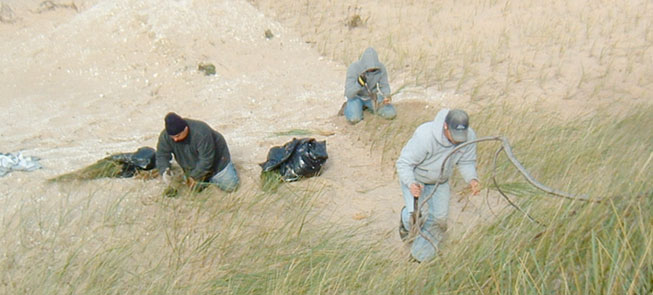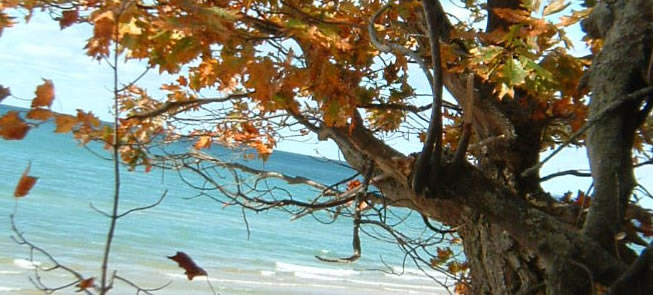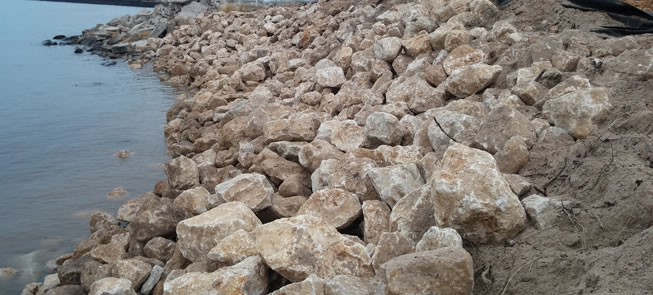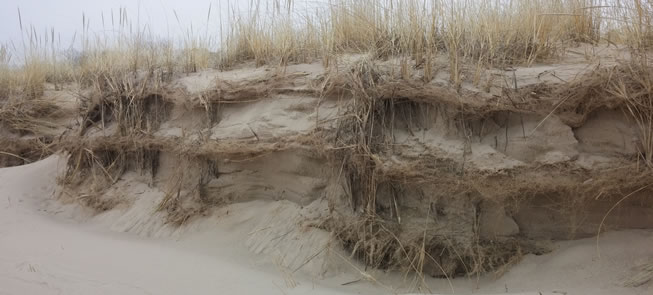In the middle of Ottawa County, where I now live, and near the shore of Lake Michigan is a small lake called “Pigeon Lake”. It is connected to the big lake by a small river. Now the area is pretty much overwhelmed by a gigantic, coal – fired, electric power plant. In the past, however, the area was known for being one of the primary roosting sites of the passenger pigeon, now extinct.
My interest dates from my visits to the Holland Museum as a young schoolboy. It filled all the rooms of an old house next to Central Park. In one of the cases was a stuffed passenger pigeon. It was one of the last of the species to die. I remember it to be very similar to the morning dove, but, slimmer and with more of a russet color to the feathers. That dusty old bird made quite an impression on my young mind. I can still clearly recall it today.
The passenger pigeon was one of the most amazing examples of a creature with an instinct to flock together in large groups. The flocks would number in the millions. When moving from one roosting area to another men testified to the fact that it took over an hour for one flock to fly over them. There were also claims that the sky would appear to darken like twilight because they would block the sun over such a large area.
Scientists estimate that there were up to five billion of these birds in North America. They lived in the oak and beech forests in flocks that covered thirty square miles of woods. They laid only one white egg in the spring.
Such an incredible collection of birds soon caught the attention of the meat hunters. Year after year these gentle birds were slaughtered for market. One technique that impressed me was the use of a long pole waved in the air to knock the pigeons down. As fast as they dropped the packers would grab them, clip their throats with their teeth and pack them with salt in barrels to be shipped by rail to the big cities. Also the young pigeons, called squabs, were taken from their nests and sold as a special culinary delicacy.
In spite of their incredible numbers, it wasn’t long before the combination of hunting ,habitat changes and low reproduction greatly decreased the numbers of the flocks. In fact, when men realized what was happening they tried to save the pigeons, but, the population continued to fall. By the last part of the nineteenth century their numbers were nearly gone. Interestingly, it seemed that they could only survive in large flocks. Finally the one last lone male died in captivity in the Cincinnati Zoological Gardens in 1914.
What a shame that we could not have seen the awesome spectacle of the flocks flying over. It takes quite an imagination to think of them in the deep woods around my home when it is now open farms, blueberry plantations and young forests. It is always a sad thing when one of God’s creatures disappears so that its daily witness to His handiwork and greatness is silenced.
Did you know that the history of the passenger pigeons shows us a very important lesson about our own spiritual health? The passenger pigeon needed the flock in order to survive. The same is true for us from a spiritual point of view. The Bible makes it abundantly clear that we cannot be a Christian alone. We need other believers. In fact, so true is that that one of the marks of a child of God is that he or she will seek to join with other believers, become part of the body of Christ, in a local congregation. The modern day independent spirit is destroying God’s people. T.V. church is not enough. We need to join a church in order to be ministered to and to minister to fellow saints. We need to hear the preaching of the Gospel in our own church. If we neglect this part of Christ’s teaching we will die away just like the passenger pigeon.
I Hear His Voice
I hear His voice in the waves crash.
I hear His voice in the rustling grass.
I hear His voice in the robin’s sweet song.
I hear His voice when frogs sing the night long.
I hear His voice in the lamb’s sweet bleat.
I hear His voice in the grouse’s wing beat.
I hear His voice in the winter’s still.
I hear His voice in the gurgling rill.
I see His beauty in the sunset’s hue.
I see His beauty in the sparkling dew.
I see His beauty in the rolling hills green.
I see His beauty in the volcano’s steam.
I see His beauty in the horse’s run.
I see His beauty in the otter’s fun.
I see His beauty in my dear wife’s sweet smile.
I see His beauty in the face of my child.
Though His beauty in His creatures I see,
His voice is most clear in His Word to me.
Deane Wassink
March, 2004





